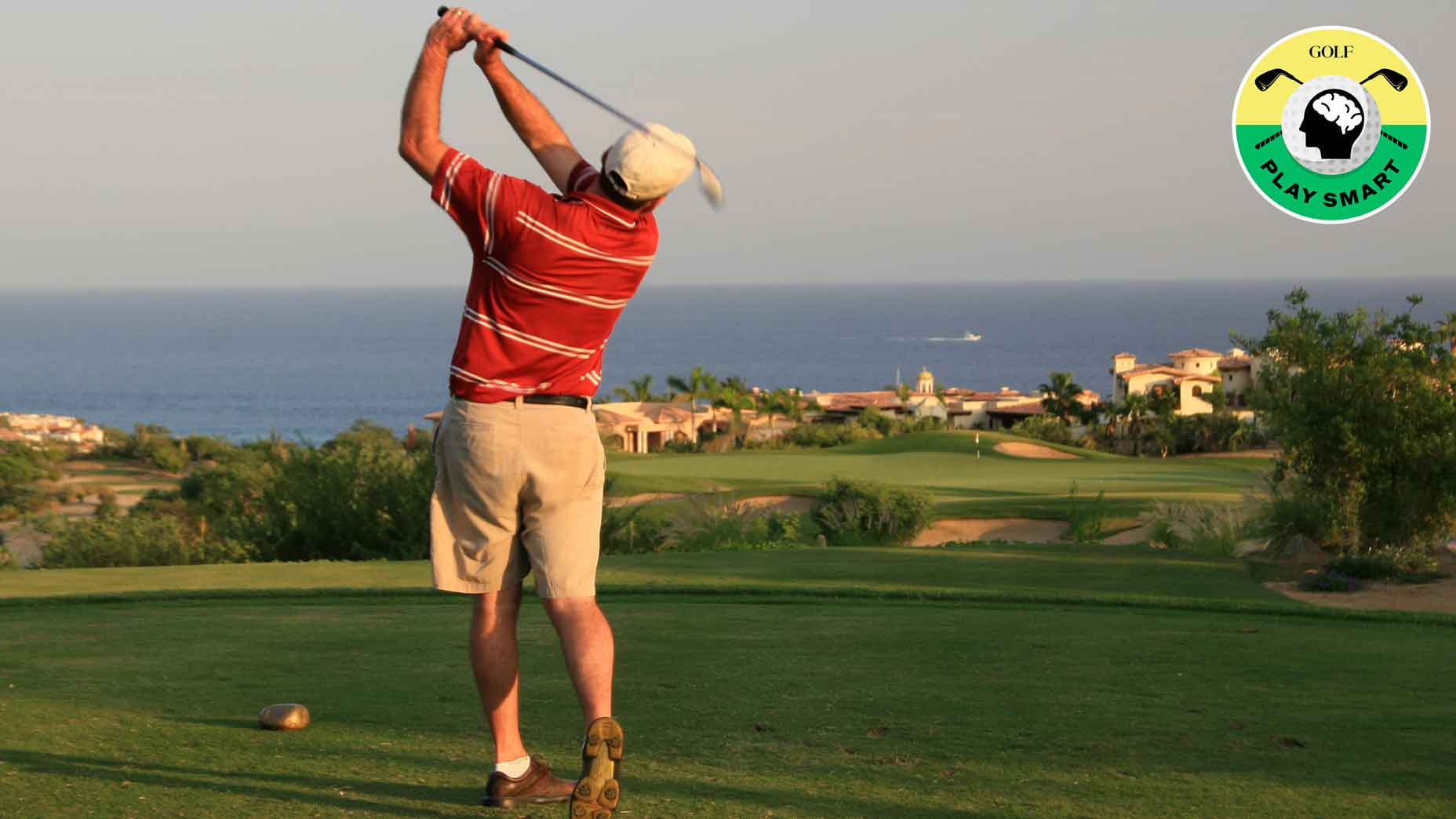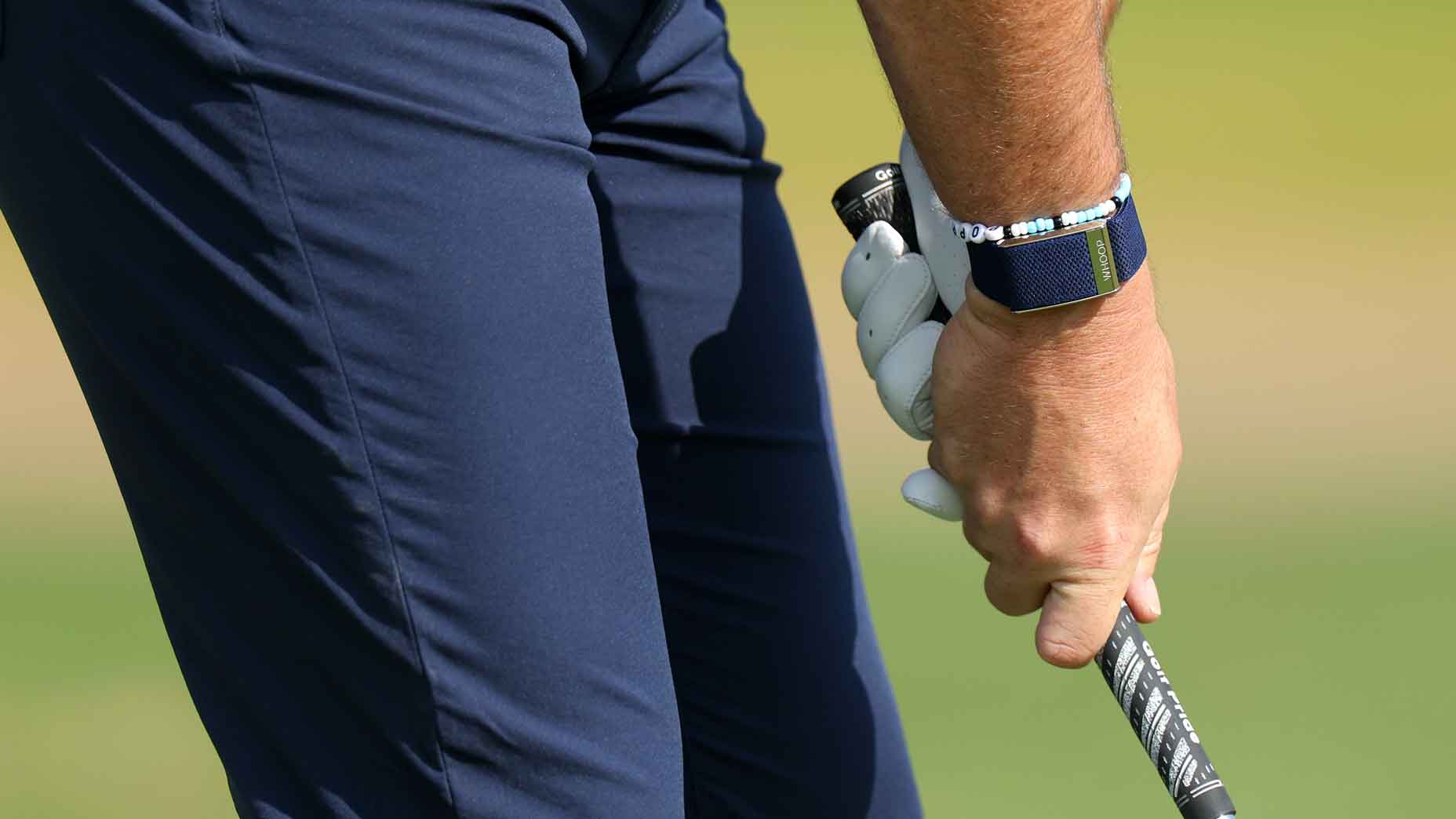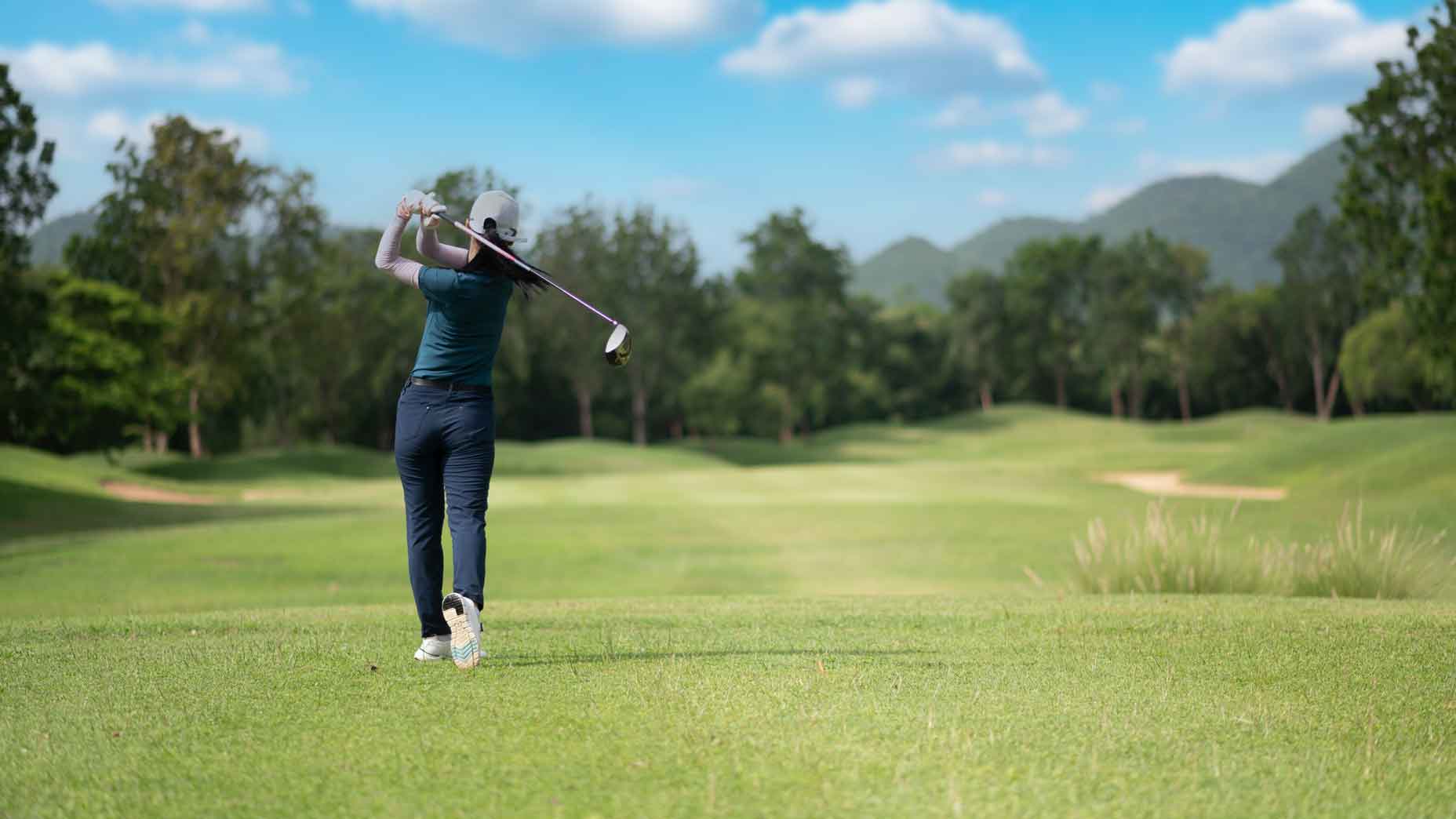Welcome to Play Smart, a regular GOLF.com game-improvement column that will help you play smarter, better golf.
Your arms and hands are essential in determining the overall success and effectiveness of your golf swing. They should be used as connectors, transferring energy from the body to the clubhead.
Before we can get into the specifics of how to best transfer energy from the body to the clubhead with the arms, let’s start with grasping the club.
From an anatomical perspective how we place the golf club in our hands is critical to our success.
Lead arm vs. trail arm in the golf swing
Starting with the lead arm, when placing the club in our hand, you want to set the grip as straight across the palm as possible — right at the base of the fingers as the fingers meet the palm. So as you grasp the club, it would be very similar to grasping a suitcase or briefcase.
The key move that a lot of players don’t realize is that you want to move the pinky finger down towards the ground. This sets the anatomical features of the arm line on top of the grip. This is so valuable in helping us aim during the golf swing.
As for the placement of the trail hand on the golf club, this is equally as important.
We want to mirror the anatomical features of the lead arm and hand. What this allows us to do during the swing is to provide opposing forces to create torquing actions, which, in effect, will help align the club for optimal impact.
Should you grip your club more in the palms or the fingers? Top 100 Teachers explainBy: GOLF Editors
Now, that your hands are placed on the club with purpose, let’s look at the individual arms.
To gain real insight into this topic, we’re going to look at things through the lens of Linear Momentum.
Let’s look at the individual mass of the lower arm, upper arm and the rib cage (which is much more massive than the individual segments of the arms). This is valuable because it provides real insight into the relationship between segments and how they interact with one another — both while speeding up or slowing down.
In an ideal situation, there will be more linear momentum in the chest early in the downswing (dues to its mass). Then, at a given point, the arms would gain on the chest. For the golfer, when and where this specifically occurs gives interesting insight to their ability to generate speed, power and accuracy.
By incorporating these principles — and understanding how to use the lead arm vs. the trail arm in the golf swing — you can maximize the transfer of energy through your arms. This will help lead to more pure shots, optimizing both distance and control.












